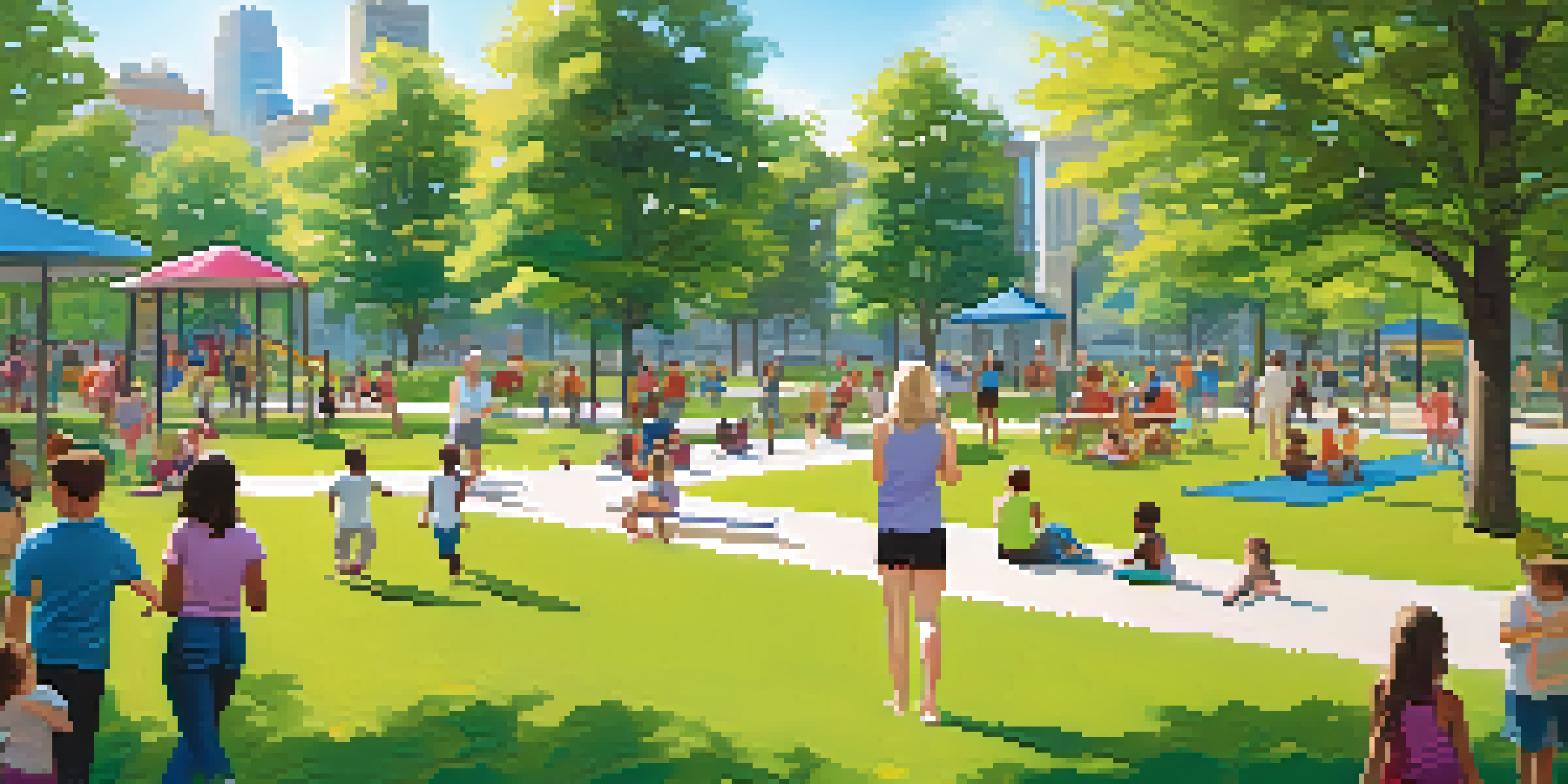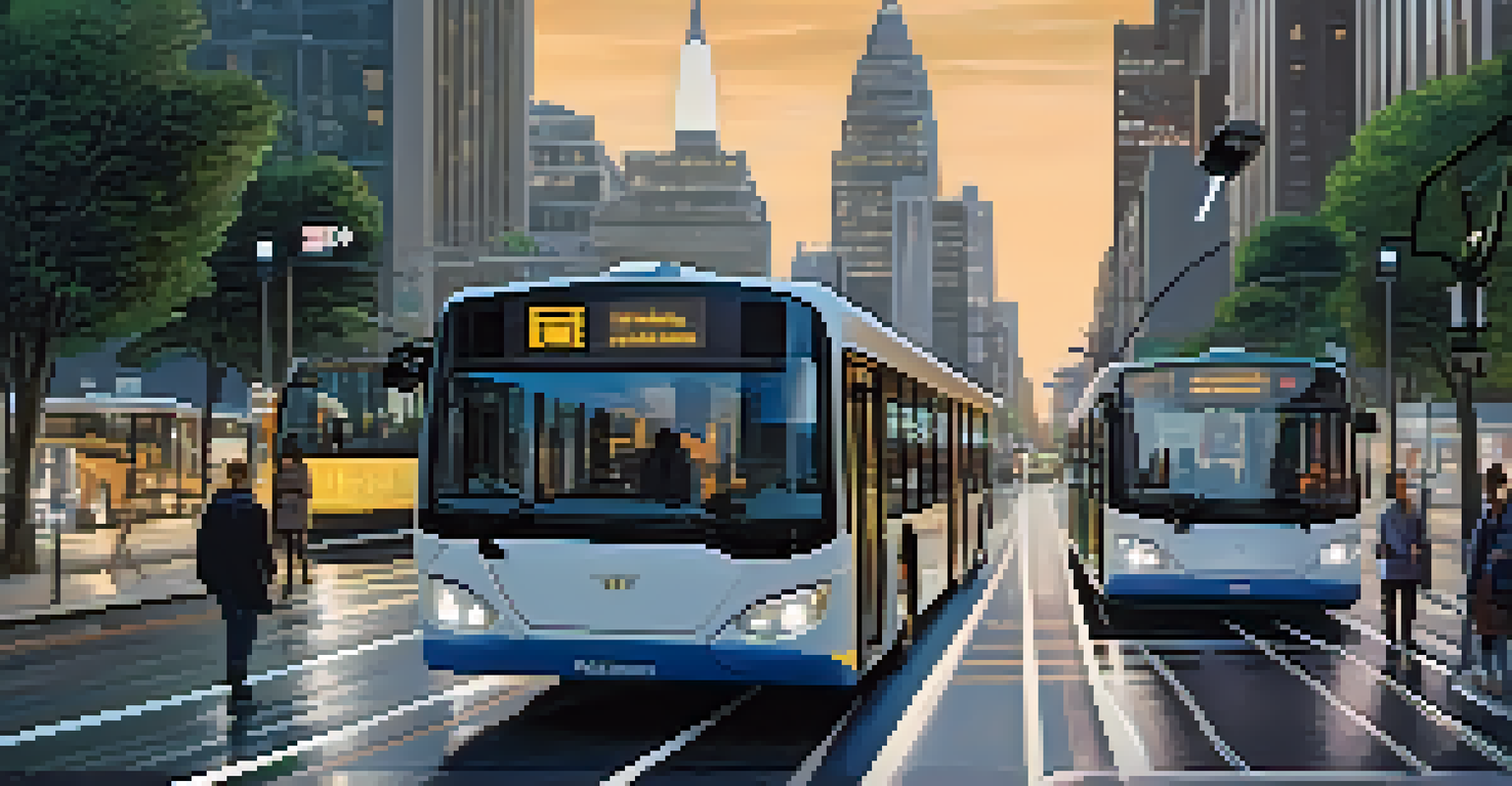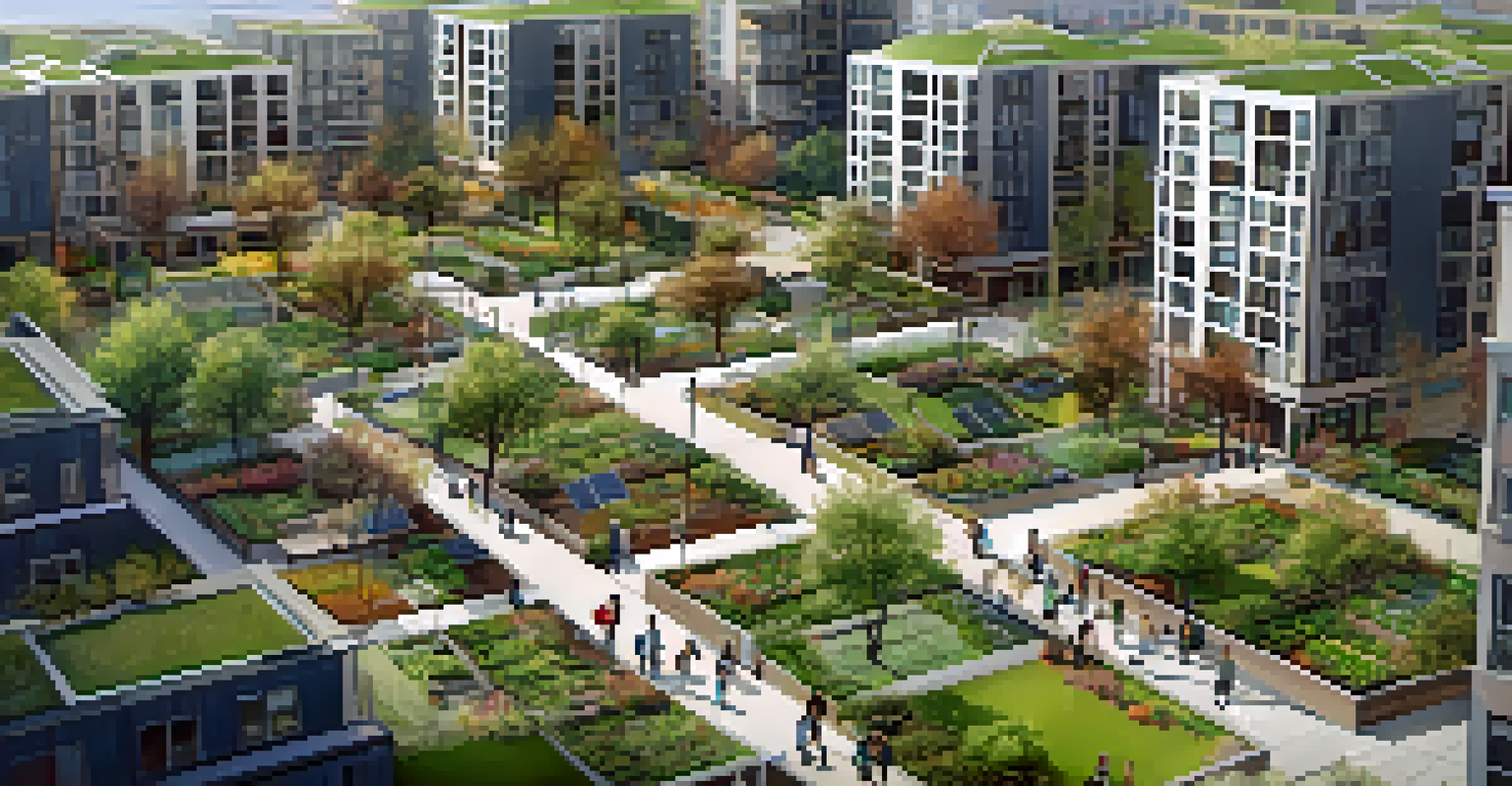The Role of Technology in Sustainable Urban Living

Understanding Sustainable Urban Living and Its Importance
Sustainable urban living revolves around creating cities that minimize environmental impact while improving quality of life. As urban areas grow, the challenge of managing resources efficiently becomes more pressing. This approach not only addresses climate change but also fosters healthier communities, making it essential for future city planning.
Sustainability is no longer about doing less harm. It’s about doing more good.
The importance of sustainable urban living lies in its potential to balance economic growth with ecological preservation. By integrating green practices, cities can reduce their carbon footprint and enhance residents' well-being. This holistic approach ensures that urban development does not compromise the environment or the needs of future generations.
Ultimately, the goal of sustainable urban living is to create resilient cities that can adapt to changing conditions. This requires innovative solutions that leverage technology, making it a crucial component of modern urban planning.
Smart Technologies: Transforming Urban Infrastructure
Smart technologies are revolutionizing urban infrastructure, making cities more efficient and sustainable. From smart grids that optimize energy use to intelligent transportation systems that reduce congestion, these innovations enhance daily life. By collecting data and using it effectively, cities can respond to challenges in real-time, improving overall functionality.

For example, smart lighting systems can adjust brightness based on pedestrian movement, conserving energy when streets are quiet. Such applications not only save resources but also create safer environments for residents. By investing in smart infrastructure, cities can lead the way toward a more sustainable future.
Furthermore, the integration of technology in urban planning allows for better resource management. This means cities can allocate water, energy, and waste services more efficiently, significantly reducing their environmental impact.
Renewable Energy Solutions for City Dwellers
The shift towards renewable energy is vital for sustainable urban living. Solar panels, wind turbines, and other clean energy technologies can dramatically reduce a city's carbon footprint. By harnessing these resources, urban areas can become less reliant on fossil fuels and promote energy independence.
The future will be green, or not at all.
Cities are increasingly incorporating renewable energy solutions into their infrastructure. For instance, solar energy can power public buildings, while wind farms can be strategically placed on city outskirts. These initiatives not only provide cleaner energy but can also stimulate local economies by creating green jobs.
Moreover, encouraging residents to adopt renewable energy at home is equally important. Incentives for installing solar panels or utilizing community wind resources can empower individuals to contribute to a greener future.
Smart Transportation: Reducing Urban Congestion
Smart transportation systems play a crucial role in promoting sustainable urban living. By utilizing data analytics and real-time monitoring, cities can streamline public transport and reduce traffic congestion. This not only enhances mobility but also lowers emissions from vehicles.
For instance, apps that provide real-time updates on public transit can encourage more people to use these services instead of driving. Additionally, features like ride-sharing programs and bike-sharing initiatives further promote sustainable commuting options. These alternatives can significantly decrease the number of cars on the road, leading to cleaner air and reduced noise pollution.
Ultimately, investing in smart transportation solutions helps create a more connected and efficient urban environment. As cities embrace these technologies, they move closer to achieving their sustainability goals.
Green Spaces: Enhancing Urban Well-Being
Incorporating green spaces into urban designs is essential for promoting sustainability and enhancing residents' quality of life. Parks, gardens, and green roofs not only provide recreational areas but also help mitigate the urban heat island effect. These natural environments contribute to biodiversity and improve air quality, making cities more livable.
Technology can play a role in maximizing the benefits of green spaces. For example, smart irrigation systems can monitor soil moisture levels, ensuring plants receive the right amount of water without waste. This kind of technology helps maintain healthy green areas while conserving vital resources.
Moreover, the presence of green spaces has been linked to improved mental health and social cohesion. By fostering community engagement and providing residents with a natural refuge, cities can enhance overall well-being.
Waste Management Innovations for Cleaner Cities
Effective waste management is a cornerstone of sustainable urban living. Technology has transformed this area, enabling cities to optimize waste collection and processing. By using sensors in trash bins, municipalities can monitor fill levels and schedule pickups more efficiently, reducing unnecessary trips.
Additionally, smart recycling programs encourage residents to separate waste correctly. Mobile apps can educate users on recycling guidelines and provide information on local disposal sites. This not only increases recycling rates but also promotes a culture of sustainability within communities.
Ultimately, a comprehensive waste management strategy can significantly reduce landfill use and environmental pollution. By embracing technology, cities can turn waste into valuable resources, such as compost or energy, promoting a circular economy.
Community Engagement in Sustainable Practices
Community engagement is crucial for the success of sustainable urban initiatives. By involving residents in the planning and implementation of green practices, cities can foster a sense of ownership and responsibility. This collaborative approach ensures that solutions are tailored to the specific needs and preferences of the community.
Technologies such as mobile apps and social media can facilitate communication between city officials and residents. These platforms allow for feedback, suggestions, and the sharing of sustainable practices, creating a more informed and engaged citizenry. When communities feel heard, they are more likely to participate in sustainability efforts.

Moreover, educational programs and workshops can empower residents with the knowledge and skills needed to adopt sustainable practices at home. From energy conservation to urban gardening, these initiatives can inspire individuals to make positive changes that benefit their environment.
The Future of Urban Living with Technology
As we look toward the future, the role of technology in sustainable urban living will only grow. Innovations in areas such as artificial intelligence, renewable energy, and smart infrastructure will continue to shape the cities of tomorrow. With ongoing advancements, urban areas can become more resilient and adaptable to the challenges they face.
Collaboration between technology providers, urban planners, and local governments will be critical in driving these changes. By working together, stakeholders can create comprehensive strategies that address ecological concerns while enhancing the quality of life for residents. This united approach is essential for a sustainable urban future.
In conclusion, embracing technology is not just an option but a necessity for sustainable urban living. By leveraging these advancements, cities can create environments that are both livable and environmentally responsible, paving the way for a brighter future.